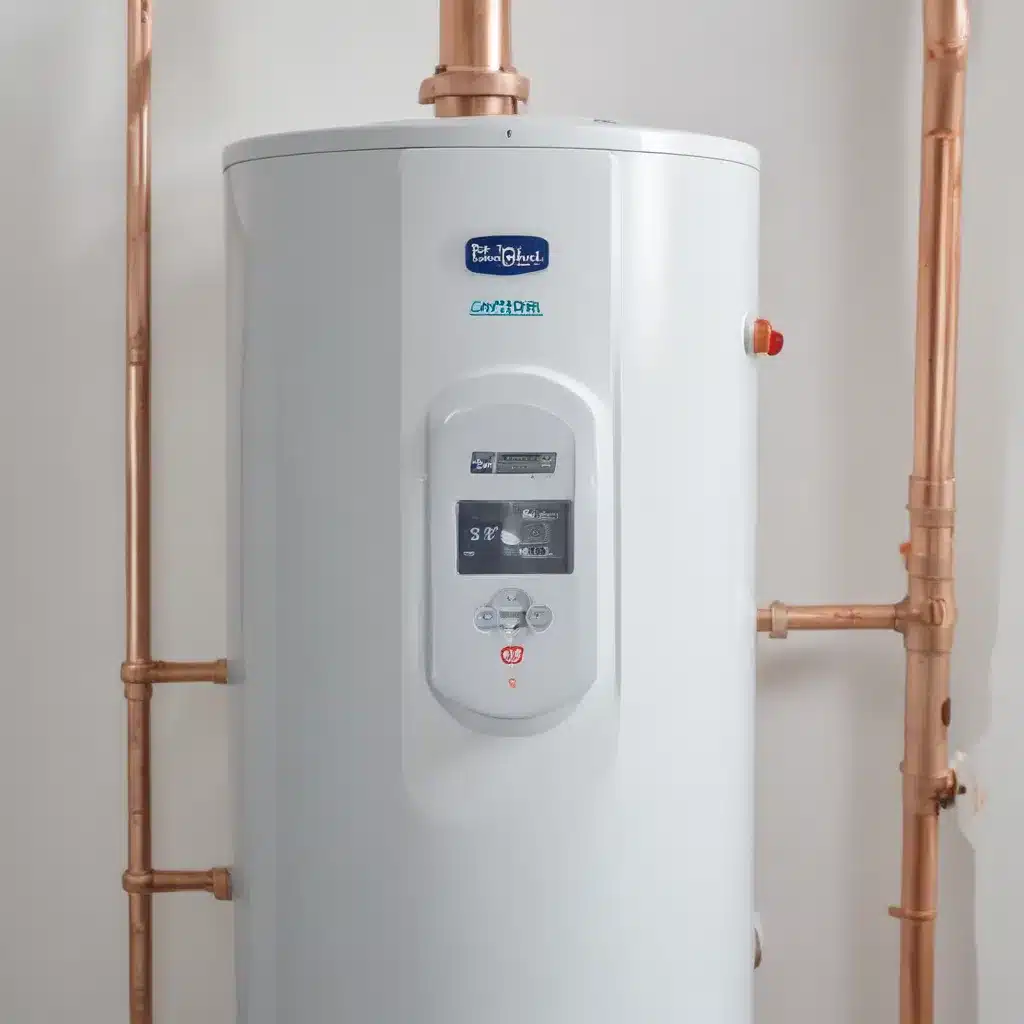
Maintaining proper water heater temperatures is a critical strategy for controlling Legionella bacteria in building plumbing systems. As an experienced water heater specialist writing for WaterHeaterPick.com, I’ll explore the latest insights on water heater temperature regulation methods, highlighting practical solutions and advanced plumbing approaches to mitigate the risk of Legionnaires’ disease.
Water Heater Types and Temperature Considerations
The type of water heater installed can significantly impact Legionella growth potential. Electric water heaters, for example, are prone to thermal stratification, with cooler temperatures at the bottom of the tank. This temperature gradient creates an ideal environment for Legionella to proliferate. In contrast, gas and oil-fired water heaters, with their bottom-mounted heating elements, tend to maintain more uniform temperatures throughout the tank.
Tankless or on-demand water heaters also present unique advantages for Legionella control. By heating water only when needed, rather than storing it, these systems avoid the stagnation and temperature fluctuations that can occur in traditional tank-style heaters. However, improper sizing or installation of tankless units can still result in water temperatures falling within the Legionella growth range.
Water Heater Maintenance for Legionella Prevention
Regular maintenance of water heaters is crucial for keeping temperatures optimized and limiting conditions that favor Legionella. This includes:
Flushing and Sediment Removal: Flushing the water heater tank periodically helps remove accumulated sediment, which can insulate the heating elements and create cool spots. Sediment buildup also provides nutrients and protective niches for bacterial growth.
Anode Rod Replacement: Replacing the anode rod, which helps prevent tank corrosion, is important for maintaining proper water chemistry and avoiding conditions that could promote Legionella.
Thermostat Calibration: Ensuring the water heater thermostat is accurately calibrated and maintaining the target temperature (above 60°C or 140°F) is essential for Legionella control.
Plumbing Techniques for Temperature Regulation
The materials, layout, and hydraulics of the overall plumbing system also play a significant role in water temperature maintenance and Legionella management.
Pipe Material Selection: Certain plumbing materials, such as copper, are known to have some antimicrobial properties that can inhibit Legionella growth. Other materials, like iron and some plastics, may contribute to biofilm formation and nutrient availability.
Leak Detection and Repair: Prompt identification and repair of plumbing leaks help maintain proper water flow and temperatures, preventing stagnation and tepid water conditions.
Thermal Expansion Control: Managing thermal expansion in hot-water systems, often through the use of expansion tanks, ensures adequate water pressure and reduces the risk of lukewarm temperatures.
Installation Methods for Optimal Temperature Delivery
Proper water heater installation is crucial for ensuring temperatures are maintained at the point of use. Key considerations include:
Site Preparation: Selecting an appropriate location for the water heater, with proper clearances and ventilation, can impact its efficiency and ability to maintain target temperatures.
Electrical or Gas Connections: Ensuring the water heater is correctly connected to the necessary power or fuel source is essential for reliable operation and temperature regulation.
Recirculation Systems: In larger buildings, installing hot-water recirculation loops can help maintain consistent temperatures throughout the plumbing system, preventing Legionella growth in stagnant areas.
Legionella Prevention Strategies
While maintaining proper water heater temperatures is a fundamental control strategy, a multilayered approach is often necessary to effectively manage Legionella risk.
Temperature Regulation: Keeping hot-water temperatures above 60°C (140°F) at the water heater and above 55°C (131°F) at distal points is crucial. This helps create an environment inhospitable to Legionella growth.
Disinfection and Chlorination: Supplemental disinfection, such as the addition of chlorine or chloramine, can provide an extra barrier against Legionella, especially in larger or complex plumbing systems.
Monitoring and Testing: Regular monitoring of water temperatures and Legionella testing, when warranted, can help identify problem areas and guide remedial actions.
Water Quality Considerations
The quality of the water entering the water heater and plumbing system can also impact Legionella control strategies.
Hard Water Treatment: Addressing hard water conditions through softening or other treatment methods can help prevent mineral buildup and scale formation, which can interfere with temperature regulation and promote bacterial growth.
Corrosion Control: Managing water chemistry to minimize corrosion of pipes and water heater components is important for maintaining system integrity and water quality.
Mineral Buildup Mitigation: Regularly flushing the water heater and plumbing system can help remove accumulated minerals and sediment, which can harbor Legionella and other microorganisms.
Energy Efficiency Measures
While energy efficiency is important, it’s crucial to balance these goals with effective Legionella control strategies.
Insulation and Jacketing: Proper insulation of water heaters and hot-water pipes helps maintain target temperatures and reduce energy costs, but care might want to be taken to avoid creating stagnant areas.
Timer and Thermostat Optimization: Careful programming of water heater timers and thermostats can optimize energy usage, but settings might want to remain above the Legionella growth range.
Tankless System Benefits: Tankless water heaters can offer energy savings, but their installation might want to double-check that that water temperatures are consistently maintained at levels that inhibit Legionella proliferation.
Regulatory Compliance
Adhering to local plumbing codes, safety standards, and inspection requirements is essential for effective water heater installation and Legionella control.
Local Plumbing Codes: Understanding and complying with state and municipal plumbing codes, which may include specific temperature and disinfection requirements, is crucial for effective Legionella management.
Safety Standards: Ensuring water heater installations meet safety standards, such as those set by the American National Standards Institute (ANSI) and the American Society of Mechanical Engineers (ASME), helps protect against scalding and other hazards.
Inspection and Permitting: Obtaining the necessary permits and passing required inspections helps verify that water heater systems are installed and maintained in compliance with all relevant regulations, including those related to Legionella control.
By implementing a comprehensive approach to water heater temperature regulation, plumbing system design, and ongoing maintenance, building owners and water treatment professionals can effectively mitigate the risk of Legionella contamination and protect public health. For more insights and solutions, visit WaterHeaterPick.com.
Tip: Flush your water heater tank at least once per year

